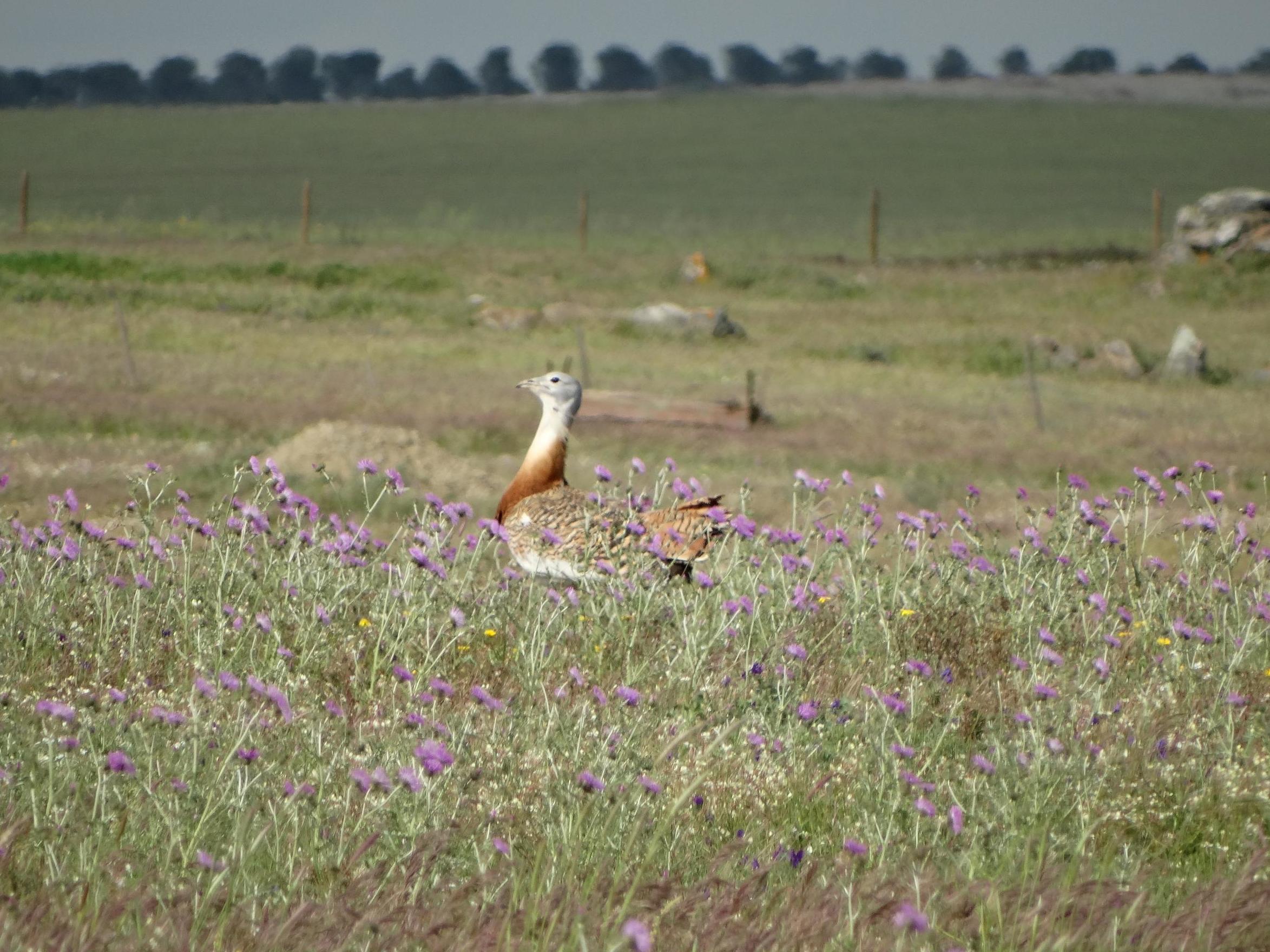Rising demand for wine and olive oil will cut endangered bird habitats in Europe by half in 100 years, ecologists warn
‘It is crucial to develop new agricultural methods and improve agricultural productivity to feed an increasing human population,’ says academic

The last remaining habitat for several endangered bird species in Europe could be halved in the next century because of rising demand for products such as olive oil and wine, researchers have warned.
As farmers in Spain and Portugal convert land to profitable crops that shoppers want, it will be less suitable for great bustards, little bustards, lesser kestrels and other species, their study found.
Until now, low-intensity farming of cereals – rotating crops and avoiding fertilisers and pesticides – has created semi-natural “agro-steppes” that are home to what ecologists consider important populations of “at-risk” species.
But these spaces are increasingly being converted to use for irrigated crops, such as vineyards and olive groves, which dramatically changes the open landscapes that provide resources for rare birds.
The new report warns that if the current market pressure on these areas continues, they may decline by 20 per cent by 2050 and 40 per cent by 2110. The more demand for products such as wine and olive oil rises, the more severe the habitat loss will be, the paper says.
Sales of Spanish wine grew steadily from 2010 to last year, when they were worth $10.5m (£8.3m), according to Statista. Sales of the country’s olive oil fluctuated over that time but last year hit a record 1.7m tonnes.
In the early 2000s some of these sites were designated special protection areas for bird conservation and became part of an EU “Natura 2000” network of priority areas for conservation – the world’s largest protected areas.
The researchers at the University of East Anglia and University of Lisbon, whose findings are published in the journal Biological Conservation, used aerial imagery to look at 21 protected areas in Spain and Portugal to assess the effectiveness of Natura 2000 over 10 years.
The regions studied are home to a third – up to 15,000 – of the world’s population of great bustards, officially classed as vulnerable to extinction.
Traditional-style olive groves and vineyards are occasionally used for feeding or resting by great bustards, little bustards and sandgrouse, but the modern versions are inadequate for such birds, ecologists say.
Study leader João Gameiro, of the University of Lisbon, said: “The Natura 2000 network is the centrepiece of Europe’s biodiversity conservation strategy and has enabled an important comeback of a very diverse range of mammals and birds, including the great bustard and the lesser kestrel.
“However, it is important to consider why losses occurred even within these protected sites. This will compromise the positive outcomes of past conservation efforts and, at the current rate of habitat conversion, agro-steppes could be reduced to 50 per cent of the present area during the next century.”
PhD co-supervisor Aldina Franco said similar changes may be happening at the same scale in other European countries but this study was based in Iberia because it has a high proportion of endangered birds.
“Although ecological restoration has become a priority and a reality in Europe, we are still losing important priority habitats for conservation,” said Dr Franco.
“It is crucial to develop new agricultural methods and improve agricultural productivity to feed an increasing human population. This should reduce pressure on the conversion of natural habitats into new agricultural areas.
“However, at the same time, we also need to allocate large areas of land to less intensive agricultural methods where human activities are compatible with the persistence of wider countryside species and deliver a variety of ecosystem services and resilience.”
Join our commenting forum
Join thought-provoking conversations, follow other Independent readers and see their replies
Comments